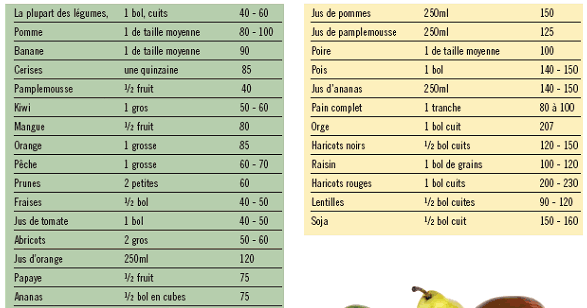38 the calorie used on food labels is equal to calories
Why Do Food Labels Use Calories Instead of Joules or Kilojoules? A kilocalorie equals 1,000 "small" calories, which is the energy it takes to raise the temperature in 1 gram of water 1 degree Celsius. On U.S. food labels, the term "calorie" actually means kilocalorie, though a calorie is technically the smaller measurement. Kilojoules Most countries outside the United States use kilojoules on food labels. The Thermic Effect of Food: What It Is & Why It Matters (A Lot) This process gave us the calorie values for each macronutrient that we use today: 1 gram of Protein = 4 calories; 1 gram of Carbohydrate = 4 calories; 1 gram of Fat = 9 calories; 1 gram of Alcohol = 7 calories; 1 Calorie is equivalent to 1 kilocalorie. The capital C in 'Calories' denotes kcal on food labels.
Kilocalories Vs. Calories: Understanding The Difference Protein = 4 calories per gram. Fats = 9 calories per gram. For example: If your food in question has 8 grams of carbs, 15 grams of fat and 7 grams of protein, to determine the caloric value of the food in question you will do as follows: 8 g of carbs * 4 cals per gram = 32. 7 g of protein * 4 cals per gram = 28.
The calorie used on food labels is equal to calories
USER GUIDE Grazie per aver scelto questo prodotto LG. Per garantire un uso sicuro e corretto del dispositivo, si prega di leggere con attenzione la guida per.544 σελίδες The calorie used on food labels is equal to - Brainly.com The calorie used on food labels is equal to - 2868021 cobe16 cobe16 02/12/2017 Biology High School answered The calorie used on food labels is equal to 1 See answer Advertisement Advertisement cobe16 is waiting for your help. Add your answer and earn points. ... Effects of physical activity calorie equivalent food labelling to ... Background: There is limited evidence that nutritional labelling on food/drinks is changing eating behaviours. Physical activity calorie equivalent (PACE) food labelling aims to provide the public with information about the amount of physical activity required to expend the number of kilocalories in food/drinks (eg, calories in this pizza requires 45 min of running to burn), to encourage healthier food choices and reduce disease.
The calorie used on food labels is equal to calories. What is the difference between the dietary calorie and the physical ... Answer. They are both units of energy, but the dietary Calorie (note the use of upper case 'C') equals 1000 'physics' calories. The physics calorie represents an amount of energy needed to raise (or lower) one gram of liquid water by one centigrade degree. That amount of energy is too small to conveniently describe the energy content of food, so ... Why do I get a different amount of Calories when I use the 4-4-9 ... There are six ways to calculate Calories for a label. Three of the most popular are: the 4-4-9 formula; the 4-4-9 formula adjusted for fiber; Atwater Factors. Manufacturers often use 4-4-9 or 4-4-9 adjusted for fiber, and the USDA uses Atwater Factors. 4-4-9 is based on the following calculations, which are average conversion factor values: Kcal vs. Calories: Differences and How to Convert - Healthline One calorie (kcal) equals 4.18 kJ or 4,184 joules (J) ( 1 ). To convert from calories to kJ, multiple calories by 4.18. Conversely, to convert from kJ to calories, divide kJ by 4.18. For example, a... Why most food labels are wrong about calories - The Conversation But things get tricky because food labels tell only half the story. A calorie is a measure of usable energy. Food labels say how many calories a food contains. But what they don't say is that how...
New calorie labelling rules come into force to improve nation's health ... On average the portions of food or drink that people eat out or eat as takeaway meals contain twice as many calories as their equivalent bought in a shop, where labelling is much more common.... What's the difference between Kcal and Calories ... - Thrive Beyond Pills In nutrition, one kilocalorie (1 kcal) is equal to one calorie (1 cal) - no conversion is needed. On the other hand, 1 kilocalorie (kcal) = 4.18 kilojoule (kJ). Therefore, to convert kilojoule to kilocalorie, divide the number of calories on the food label by 4.18 or 4.2. What are calories? How are they measured in food? | HowStuffWorks One calorie is equal to 4.184 joules, a common unit of energy used in the physical sciences. Most of us think of calories in relation to things we eat and drink, as in "This can of soda has 200 calories." It turns out that the calories listed on a food package are actually kilocalories (1000 calories = 1 kilocalorie). Are the Calorie Counts on Food Labels Accurate? - Discover Magazine A 2013 study on the food label accuracy of snack foods found that their average caloric content was more than 4 percent higher than the calories listed. The researchers suggest this was because the foods contained more carbohydrates than listed. Beyond that, the counts on labels can be inaccurate for other reasons, too.
The Calorie used on food labels is equal to how many calories? Explanation: The food Calorie (capital "C") is actually a kilocalorie ( 1 ×103 calories)! Why would someone do this? Well, probably because it takes about 2 megacalories ( 2 ×106) to run a person for a day. So it is more convenient to talk about 2,000 Calories than it is to talk about 2 million calories. How Do They Calculate Calories on Food Labels? A calorie is a measure of energy. More specifically, one calorie is the amount of energy it takes to heat one kilogram of water 1 degree Celsius at sea level. When scientists first started to measure the energy, or calories in food, they used a bomb calorimeter. A sample of food like that large portion of fries is placed into a metal container called a bomb. Calories on the New Nutrition Facts Label | FDA One package of food may contain more than one serving, so, if you eat two servings you would be getting two times the calories shown on the label. For example, if you ate one serving of the food... Food labels should include physical activity calorie equivalent, says study Physical activity calorie equivalent (PACE) food labelling aims to show how many minutes or miles of physical activity are needed to burn off the calories in a particular food or drink. For example, eating 230 calories in a small bar of chocolate would require about 46 minutes of walking or 23 minutes of running to burn off these calories, the researchers explained.
Calories on the Label Equal Calories Stored - Fact or Myth? Saying "a calorie is a calorie" sort of implies that 1 calorie on the label translates to 1 calorie of usable energy, but that isn't completely true. Different types of macronutrients can have a wide range of physiological effects regarding hunger, hormones, energy gained, energy spent, psychology , physical appearance, and more.
What's The Difference Between KCal and Calories? (How To Convert) Simply, 1 Calorie is equal to 1 kilocalorie. You may wonder why I have used a capital C when writing Calories. This is not a mistake because the capital C in Calories denotes kcal on food labels, Calories and kilocalories are used interchangeably to mean the same thing.

Convert Calories Into Grams Into Indulin / Convert Calories Into Grams Into Indulin : Protein ...
The calorie used on food labels is equal to how many calories? The calorie used on food labels is equal to 1000 calories . Cells use this energy in various metabolism of our body. Calories are essential for the human body to do day to day activities. Cells use the energy present between the chemical bonds of carbohydrates or starch to various metabolic activities. So it can be said that the Calorie used on ...
Effects of physical activity calorie equivalent food labelling to ... Background: There is limited evidence that nutritional labelling on food/drinks is changing eating behaviours. Physical activity calorie equivalent (PACE) food labelling aims to provide the public with information about the amount of physical activity required to expend the number of kilocalories in food/drinks (eg, calories in this pizza requires 45 min of running to burn), to encourage healthier food choices and reduce disease.
The calorie used on food labels is equal to - Brainly.com The calorie used on food labels is equal to - 2868021 cobe16 cobe16 02/12/2017 Biology High School answered The calorie used on food labels is equal to 1 See answer Advertisement Advertisement cobe16 is waiting for your help. Add your answer and earn points. ...
USER GUIDE Grazie per aver scelto questo prodotto LG. Per garantire un uso sicuro e corretto del dispositivo, si prega di leggere con attenzione la guida per.544 σελίδες






Post a Comment for "38 the calorie used on food labels is equal to calories"